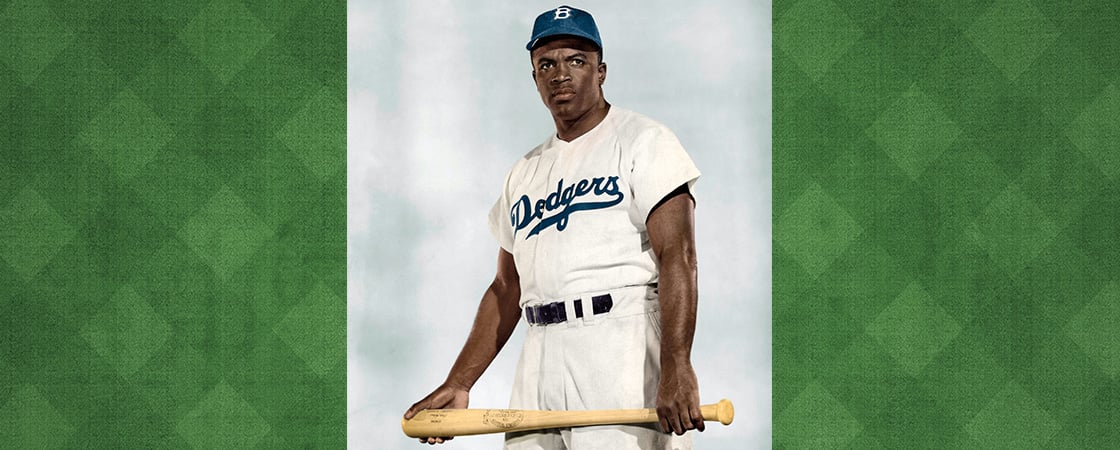Keystone/Getty Images
It was April 15, 1947. The day was crisp and sunny—perfect weather for a baseball game. Thousands of people poured into Ebbets Field in New York to watch a team called the Brooklyn Dodgers. Many fans had come to see the team’s new player: Jackie Robinson.
Early on in the game . . . CRACK! A player on the other team hit the ball. He sprinted toward first base, where Robinson stood. Another Dodgers player snatched the ball and threw it to Robinson. Robinson caught the ball just before the runner reached first base.
“OUT!” shouted the umpire. Robinson had made a great catch. He had also just made history.
It was April 15, 1947. The day was cool and sunny. It was perfect weather for a baseball game. Thousands of people came to Ebbets Field in New York. They were there to watch a team called the Brooklyn Dodgers. Many fans had come to see the team’s new player: Jackie Robinson.
Early on in the game . . . CRACK! A player on the other team hit the ball. He ran toward Robinson who was standing at first base. Another Dodgers player grabbed the ball and threw it to Robinson. Robinson caught the ball just before the runner touched first base.
The player was out! Robinson had made a great catch. He had also just made history.
It was April 15, 1947. Thousands of people were at a baseball game in New York. There was a new player on the Brooklyn Dodgers: Jackie Robinson.
Robinson played first base. He made a great catch. He also made history.

